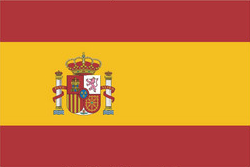NASA on Wednesday launched a satellite designed to track carbon dioxide, a leading greenhouse gas that is responsible for global warming.
The Orbiting Carbon Observatory-2 took off aboard a Delta 2 rocket at 2:56 am Pacific time (0956 GMT) from Vandenberg Air Force Base in California.
After 56 minutes of flight, the satellite separated from the second-stage rocket as planned, with no glitches.
“The orbiting carbon observatory has separated from the second stage and is now flying on its own,” said NASA commentator Steve Agid, as the space agency broadcast live video showing mission control staff hugging and shaking hands.
The successful takeoff was a boon to NASA, after two previous bids to send a carbon-tracking spacecraft into orbit failed due to rocket malfunctions in 2009 and 2011.
An attempt to launch the satellite Tuesday was also aborted at the last minute, after engineers discovered a problem with water flow to the launch pad.
Tim Dunn, NASA launch director, said the team received “very good news” that the satellite’s solar arrays had deployed on schedule.
“The spacecraft was rock-solid,” he said on NASA TV, describing a feeling of “pure joy” in mission control.
“It all came together tonight.”
The satellite is now a part of the A-Train, a constellation of five other international Earth-observing satellites.
“The OCO-2 mission will produce the most detailed picture to date of natural sources of carbon dioxide, as well as their ‘sinks’ — places on Earth’s surface where carbon dioxide is removed from the atmosphere,” NASA said.
“The observatory will study how these sources and sinks are distributed around the globe and how they change over time.”
The OCO-2 will take 24 measurements of carbon in the atmosphere every second, about a million per day, but clouds are a major obstacle.
Its field of view is about one square mile (three square kilometers), so even wispy clouds can obscure its measurements.
NASA expects about 100,000 of the satellite’s data snapshots from around the world daily will be sufficiently cloud-free to be useful.
Kevin Gurney, an associate professor at Arizona State University, Tempe, said the satellite will contribute to a series of NASA-funded efforts to measure fossil fuel emissions.
“This research and OCO-2 together will act like partners in closing the carbon budget, with my data products estimating movements from the bottom up and OCO-2 estimating sources from the top down,” Gurney said.
Source: Terra Daily








